
Miriam and Luis helped us plan our Mexico City itinerary.
Over breakfast
Miriam and Luis helped us plan our Mexico City itinerary.
[We'll take the next-to-last bus from Oaxaca at 11:45 PM on Sunday, after our Chanukah celebration with Miriam and Luis, arriving in el Ciudad early in the morning. Luis even made our reservations for the hotel where we will be able to check in early.]
In addition to helping us with travel to Mexico City, Miriam and Luis gave us great information about what to see there, including the Jewish community.
We then set off to town by bus to mail some items and get the bus to Monte Albán. We happened to take the "other" bus route. A teen jumped onto the bus, hawking the ride to passengers at each stop. Mark decided it was time to get of at just the right intersection (street signs are hard to read, but it was Independecia). Debbie had a couple of items she needed to mail, but first needed envelopes and stationery. We were near the tourist office, so we stopped in there and they directed us a few blocks further on to what is the primary office-supply store in the city. You take a number on entering and the clerk behind the counter fetches the items you need. Then you pay at a separate station. We found a little pastry shop to sit and address the envelopes… and enjoy the goodies.
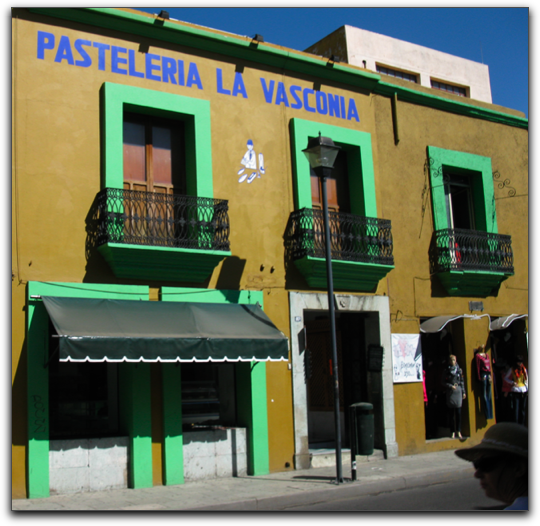
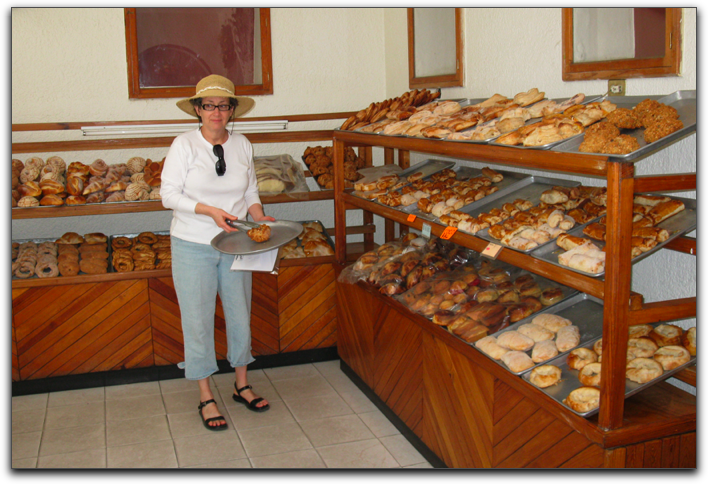
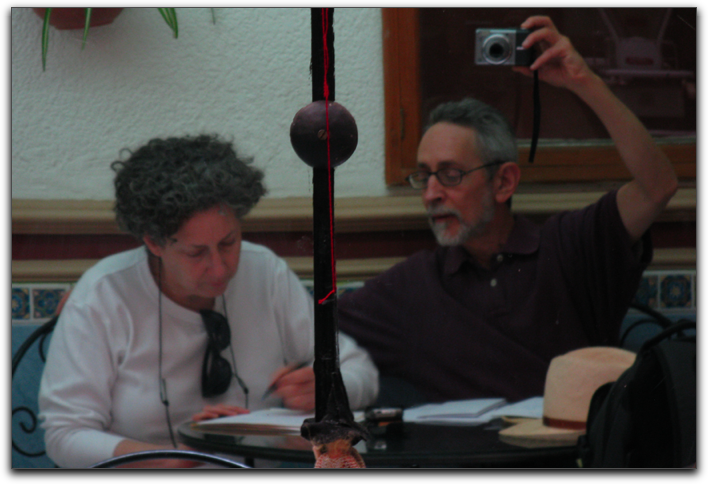
The central post office is back at the corner of Independicia at the Alameda (some of these corners are becoming very familiar). However, it turns out that the fastest way to send anything by post would take six days. Luckily, there's a FedEx a block and a half away. Mark showed the proprietor how to find a zip code we needed using Google Maps.
The clerk was extremely thorough, rechecking to make sure he had the correct item with its envelope numerous times. Debbie filled out the forms using something we hadn't seen in years: carbon paper!
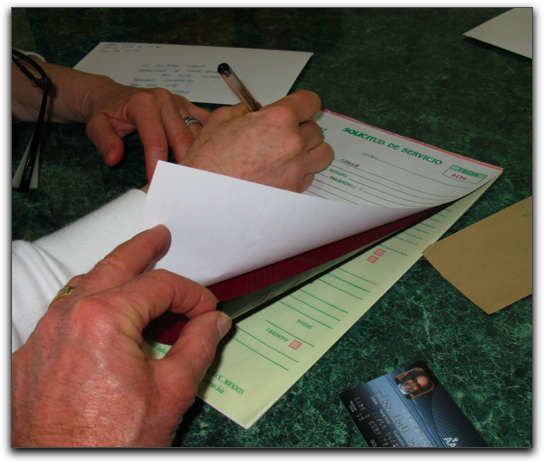
The post office only takes cash and, had we used the post, we would have seriously depleted our cash. FedEx takes credit cards, but on leaving, Mark forgot that he had not used his cash and felt the need to replenish the supply. He stood in a long line
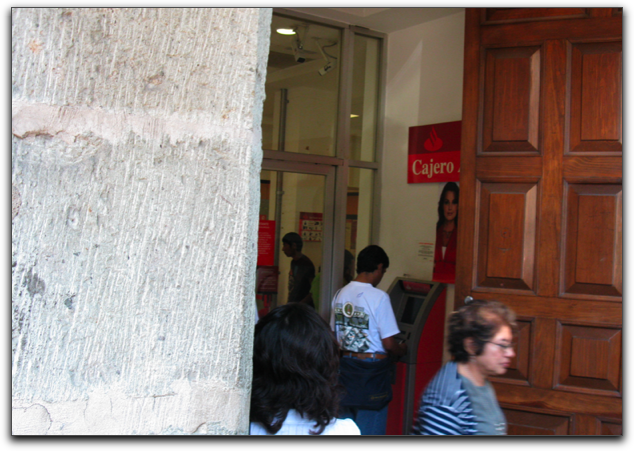
only to get to the cash machine as it crashed, displaying its window indicating that it was safe to restart Windows.
We walked back down to Mina, the chocolate street from the previous day, to get the bus. On the bus to the World Heritage Site Monte Albán, the road is only one lane with constant switchbacks climbing through a village that "opposes" Oaxaca. The scrub looks a lot like Southern California. The entire Oaxaca valley stretched out behind and below us.

(The large building in the center-left is Santo Domingo. The building with the white poles sticking up, to the right and further in the distance is the central bus station.)
At the parking lot, just below the top of the plateau of the site, we ate our lunch. And then we explored.
In the central plaza:

Flowers growing wild on the plateau:
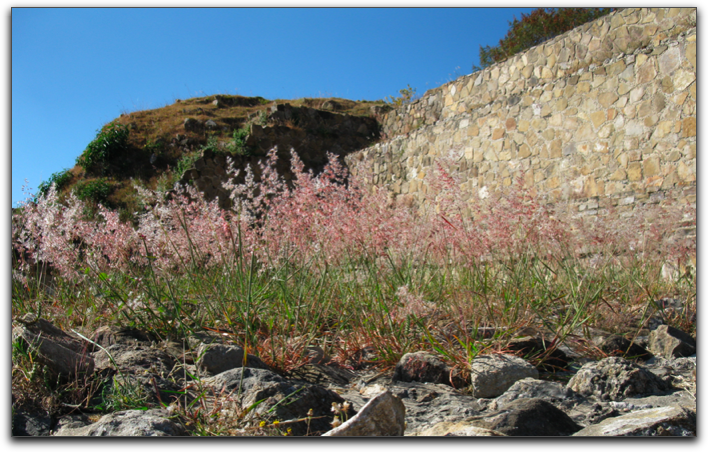


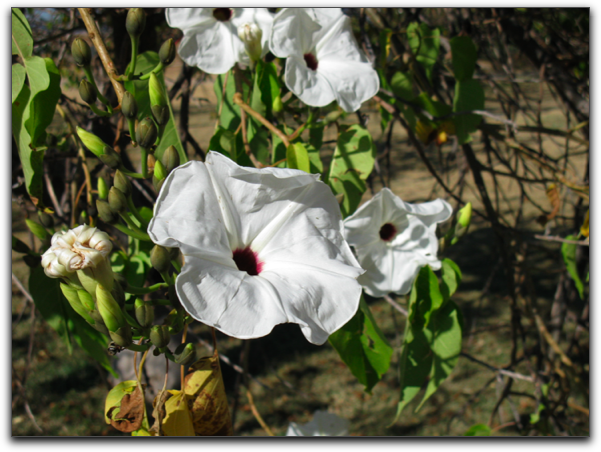
Even pomegranate… which is not a native plant:
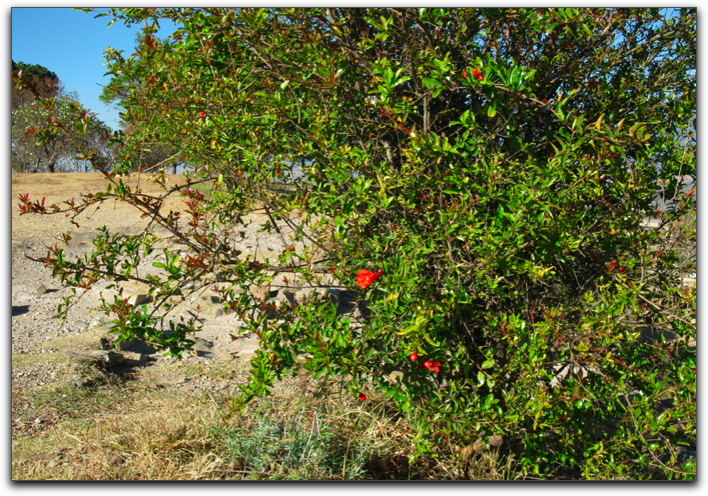
At the "temple mount" we climbed the steep steps
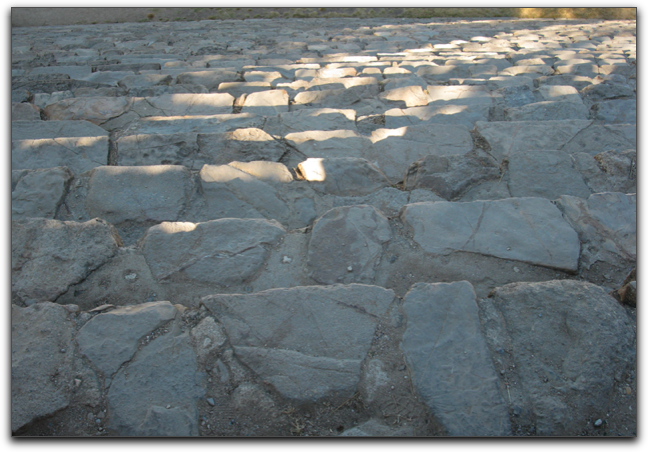
and took our portrait with Miriam and Luis' neighborhood hill in the background.
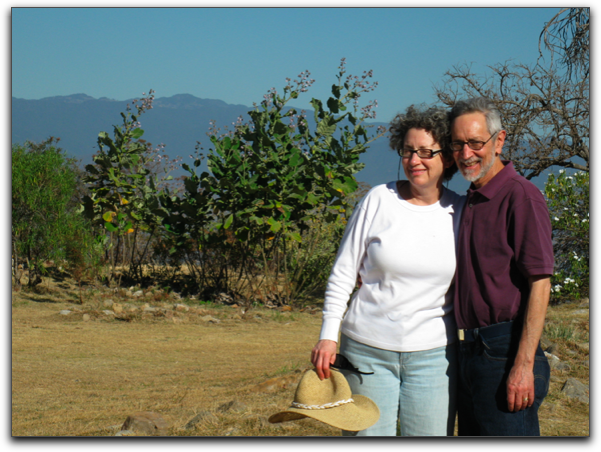
In order to construct the great city of Monte Albán, the Zapotecs had to rely on a very important resource: water. This resource was obtained from the Atoyac River which runs four kilometers northeast of the central plaza; during the rainy season, water was also obtained from hillside runoff. Rainwater deposits [reservoirs?] were constructed in Monte Albán, as can be found in the Main Plaza [we did not find these]. This particular deposit underwent several modifications during the development of the city. At one time, it was fed by two drains which can still be found at the east and west ends.In order to transport necessary water from the river to the city, the work of many slaves or persons paying tribute, was used. [!]
In the patios of houses, the Ball Court and the ceremonial complexes, small drains have been discovered which were connected to other larger drains. Some of these measure up to two meters in height and 60 centimeters in width. Their function was to collect rainwater and channel it out of the city or to storage areas.
Indicating the important [sic] of this resource, Cocijo, the water god is one of the most important Zapotec gods. He is represented in stelae, mural paintings and ceramic objects such as funeral urns and various vases.
The signage on the site is extensive and available in English so that we had a decent overview. However, we saw no mention of chocolate in the signs, the small museum, or the literature in the bookstore/gift shop. One sign overlooking the valley remarked the importantane of the animals there… To the extent that they were considered gods, and how we might learn from that in the way we interact with our environment (as though animals need to be considered divine in order for us to value them).
As we walked back up from the Monte Albán bus station to the Alameda to catch a taxi home we noticed some processional for the Virgin of Soledad passing through the Zócalo. (It was dusk, not a great time for photographing either with or without flash.)
A Band

women in full regalia, tossing chocolate and tangerine treats
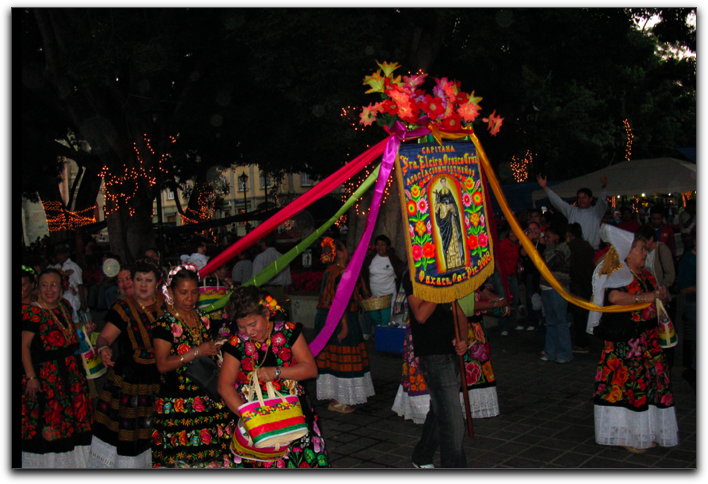
children with "Mary" on a donkey

Process
This is the first time that we've traveled with our Palms (we have the non-Windows version). We have them as phones, even though dialing requires the international code and the calls themselves are expensive. Nonetheless, because we have a small electronic notepad with us at all times, Mark is able to take notes through the day. At the end of the day he synchs with his MacBook Pro, then copies the notes to a Nisus Writer Pro file and edits that before preparing the html in Coda (made by a nice bunch of guys in Portland, OR) and adding the very few selected photos from the hundred or so taken each day, downloaded from the camera (Canon PowerShot A2000IS) to iPhoto. Debbie edits what Mark has written; Mark double-checks that and posts the material using Transmit.